A Brief History of Children’s Homes in America
Written by R.C. Self, Executive Director, New Mexico Christian Children’s Home
Etymology and Definitions
Children’s Home: A public institution for the care and protection of children whose parents can no longer care for them or have died, or who need a change of environment.

Orphanage: a residential institution for the care and protection of orphans.
Orphan: The etymology lists the earliest root definition of orphan as simply “bereaved”. The term “orphan” came to mean a child bereft of one or both parents.
Orphanos; “without parents or fatherless” – Greek lexicon, New Testament dictionary.
Note that by definition, an orphan may have a living parent. In practical terms, most orphans have at least one parent and that parent is statistically, most often, the single parent mother.
Widow: The etymology lists the earliest root definition of the Greek word widow (chera) as simply “bereft, robbed, having suffered loss or left alone”.
Note that by definition, “chera” includes the woman whose husband is dead, but the meaning is not limited to it. It does not describe how a woman is left alone, just the situation. It is broad enough to encompass single moms who lost their husbands through desertion, divorce, disease, war, disability or imprisonment.
Old and New Testament History
Old Testament scriptures frequently refer to fatherless children coupled in reference with widows; Exodus 22:22-24, Deuteronomy 10:18, 27:19, Psalm 94:5, 109:9, Isaiah 10:1-2, Lamentations 5:3, Malachi 3:5, and more. The orphan (yatom) was often a minor child whose father was dead, but whose mother may have been alive.
Widows with their fatherless children, were often single parent mothers due to death or divorce of the father, or some other desperate situation. They were vulnerable family members. They could no longer depend upon a husband or father to provide a living.
God is praised in Psalm 68:5 as the father of the fatherless and champion of the widows. Special tithes and offerings were designated for the care of the widows and fatherless, Deuteronomy 14:28-29; 26:12-13.
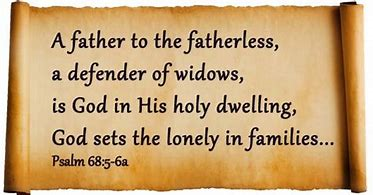
Acts 7, I Timothy 5, James 1:27 brought into the New Testament, the practice of caring for vulnerable and poor families at a time when there was no government assistance. That care included single parent families. Eunice, the mother of Timothy, Mary, the mother of Jesus, and Lydia were beloved single parent mothers. God reached out to care for them in special ways.

American History
In early American days, children were called double orphans or single orphans. Children with no parent were double orphans. Single orphans had one parent living.
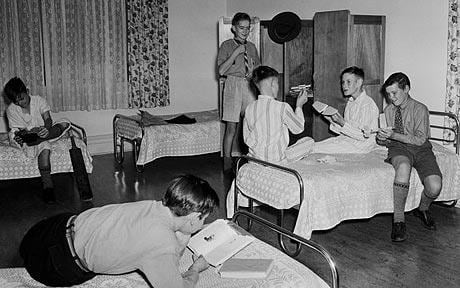
From 1847 to 1869, residential “orphanage” institution enrollment in America consisted of parentless children at 27%, and 73% with one or both parents living. Orphanage institutions serving only parentless children were non-existent. In practice, the term orphanage applied most often to single parent children.
In the case of parentless children, or double orphans, legal guardianship transferred to family members, friends or other substitute parents. Grandparents and other family members willing to serve as substitute guardians were sometimes unable to provide long-term direct child-care due to health or financial constraints. They sought assistance with children’s homes.
Judges and courts consistently support placement in children’s homes as a responsible act by parents and guardians. Legislators assure that family contact and visitation is maintained. Children’s Homes provide and care for children, with the requirement to return children to their legal guardians when requested, or in the event that placement is not in the best interest of the child’s development.
Disabled parents or single parents unable to provide adequate child-care sought assistance through enrollment of their disadvantaged children in residential institutions. Contributing factors for the placement of children were disease, unemployment, mental illness, drug addiction, alcoholism, abuse, etc. Parents maintain legal relationship with their child in placement. Most children eventually return to their family or friends.
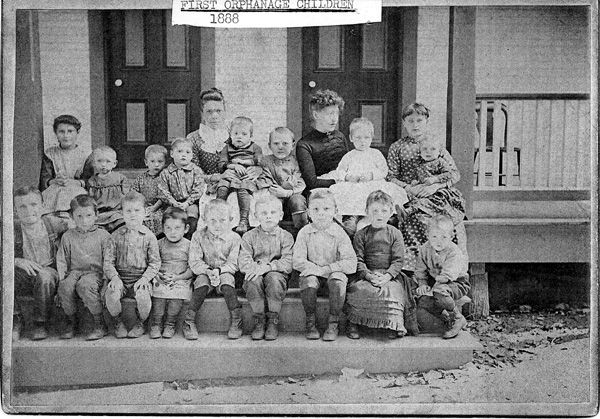
In the 1890s, American Indians faced extermination. Thousands of their children were moved to boarding schools, also loosely termed as orphanages. Like boarding schools, children’s homes also provided residential and educational assistance.
In the early 1900s, many states passed legislation authorizing financial assistance to single mothers; Aid to Families with Dependent Children and Social Security. Financial aid preserved a growing number of single parent homes, making placement in children’s homes unnecessary in some instances.
Government financial assistance to single parents did not address all of the many non-financial challenges and incapacities of single mothers. Initially, a substantial number of women disqualified for government assistance, classified as immoral. In spite of welfare to single parent homes, the number of children placed in children’s homes increased for the next 35 years, during two world wars and the Great Depression.
In 1962, the concept of child abuse was re-introduced. All 50 states had mandatory reporting laws by 1973. Children in foster family care rose from 165,000 to 364,000. Children’s homes were commonly involved in providing care as well. Many Homes developed into treatment centers, qualifying for government assistance. Parents retained legal custody unless the state intervened.
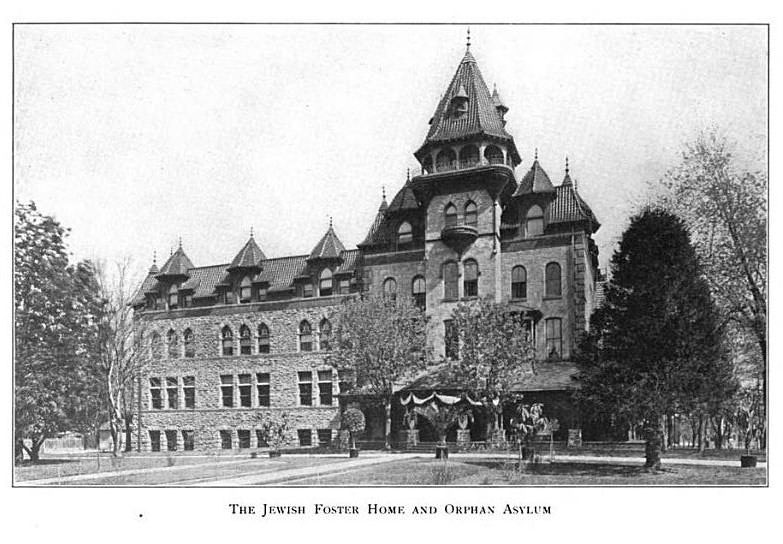
At the end of 1993, 464,000 children were in foster care, an increase of 66%, while the number of foster homes decreased 30% to100,000. State foster care systems were overburdened. Residential homes continued to provide necessities for children’s basic long-term needs; food, shelter and clothing, as well as needed child-care services.
“In spite of efforts, there still remains a group of children considered orphans by contemporary standards, simply, children who cannot live at home because of severity of problems, lack of parental ability to work and provide child care at the same time. In the true sense, they are children in society with the most need for support and care.” (Taken from “Orphanages: An Historical Overview”, Family & Children Services Division, Minnesota Department of Human Services, 1995.)
The terms orphanage, children’s home, residential institution, boarding schools, are all interchangeable terms in practical usage. They are all devoted to the care of children in need of a change of environment or substitute care for a wide variety of reasons.
New Mexico Christian Children’s Home History
The New Mexico Christian Children’s Home opened its doors in 1954 to serve fatherless children. We have served both the “double orphaned” and the “single orphaned” child for 66 years. We serve the needs of these children by providing quality homes in three different settings.
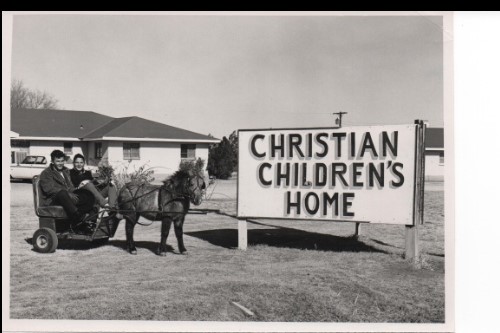
Our Residential Homes provide a place for children to grow, learn and develop with loving and caring house parents. These children are unable to live with their parent(s) or legal guardians for a variety of reasons. Poverty and other issues that arise from poverty cause some parents to place their children with us. In other cases, it may be drug or alcohol addiction, incarceration, poor health or some other factor that renders the parent/guardian incapable of caring for their child. In other cases it may be a grandparent that is raising the child and has grown too old to properly care and supervise the children. Whatever the reason, the New Mexico Christian Children’s Home stands ready to fill that gap and provide the child with the care and opportunities that he/she deserves.
Adoptive Homes give fathers to the fatherless. Adoptive Homes match birth mothers with loving Christian couples and provides a child an opportunity to succeed at life. Many children are born fatherless for many reasons and our Adoptive Homes gives a fatherless child a forever family!
Single Parent Homes also provides for fatherless or “single orphaned” children by giving their parent a second chance and an opportunity to pursue a better life for their family through education or better employment.
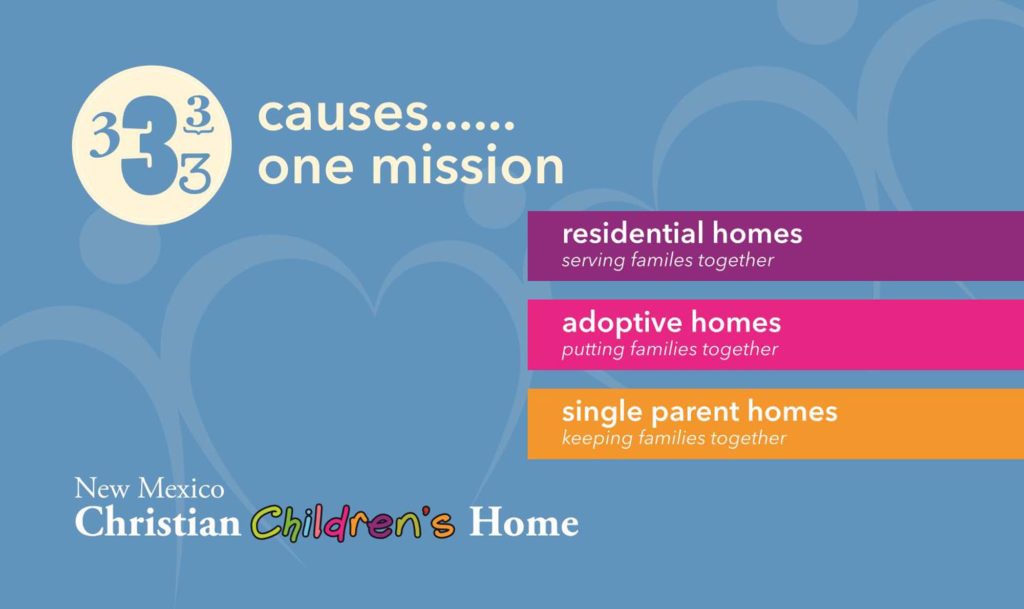
Whatever the reason, whatever the situation, New Mexico Christian Children’s Home strives to serve the fatherless and children in general to lead them to Jesus and become productive members of society.

Very well written and informative. Always enjoy the articles a nd truly miss the wonderful people involved in this mission work.
Thank you, Robin!
One of the boys in that horse buggy by the Christian Childrens Home Sign is my brother Bobby , I had never heard the term, single orphan, but I guess that’s what we were, because my father was still alive he just wasn’t able to provide for 5 small children after our mother passed, Thank you for being there for my 2 brothers, sister and I when we needed a place to go. Jack Self was my first house parent and Grover Ross was the superintendent, Because of the Christian influence of these men and many others I am the person I am today, Thank you Jesus for The New Mexico Christian Childrens Home and their staff. Today I am the director of Freedom House, a mission house that serves those in need in our community.
What a special share! Thank you so much for your kind words and sharing your memories. God bless you in your ministry as well!
Rodney your dad brought stability to the home when it was most needed. No we didn’t always see eye to eye but he was fair and provided a father figure when we needed it the most. The main thing I took from my 10 years there was you are the one that controls your life and the decisions you make are yours alone good or bad. Thanks again Jack you lived your life well and many a kid lived theirs well because of you.
Thank you for this encouraging and heartfelt message! God bless you!
What an outstanding article and I wish you all the best.